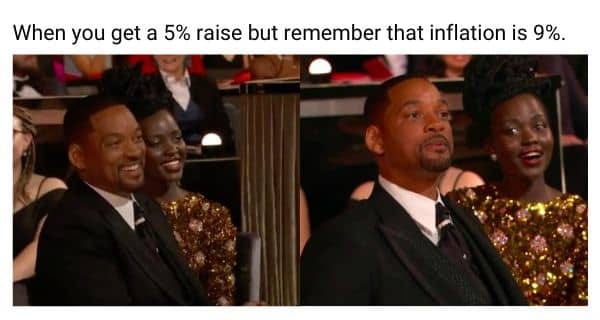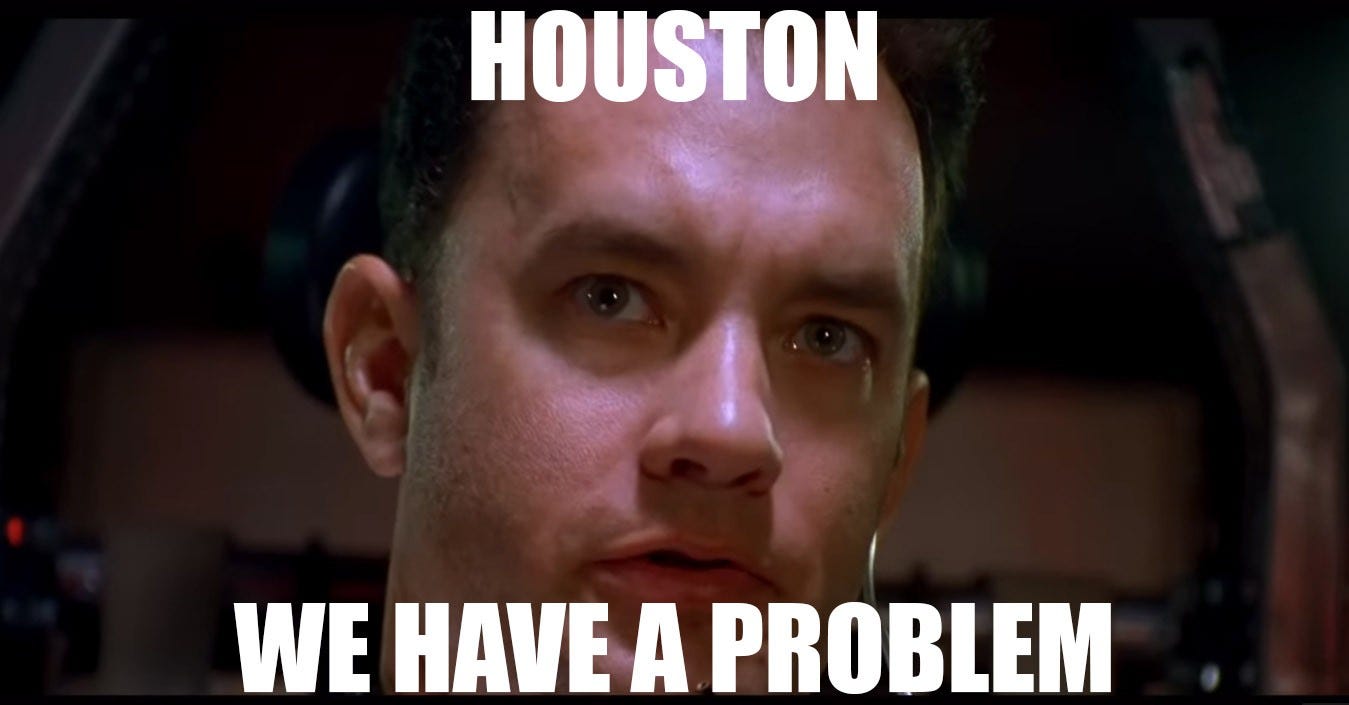Inflation is all around us. So much so that it has become a daily talking point in our casual conversations as if it were the weather or traffic. For most people however, they are only complaining about the symptoms of inflation. They may muse in public or private about the causes of inflation, but they are usually either uninformed or misinformed.
Part of this is due to the fire hose of media content being sprayed upon us, designed to keep us enraged and offended enough to return to the trough for more. Another part is the inexcusable lack of personal finance education in the United States. Whether we care to admit it or not, personal finance and financial concept in a broader sense are an inescapable part of our lives. Not all of us will use Algebra or Chemistry, but all will have a bank account, manage a personal or family budget (pro tip: you should have a budget), take out a loan, or have a credit score.
So what to do about this? How do you filter the constant barrage of information about financial topics such as inflation, the stock market, the bond market, home prices, cryptocurrency, and interest rates? To you I would say find a good filter, a source of information that cuts through the unneeded and misleading to give you what you seek.
That is what I hope to do through this newsletter, to be a filter of financial information and education to help you become more financially literate. I don’t promise to be an oracle or 100% correct every time as many do in the media, especially social media. I can only promise that you will receive unbiased, authentic analysis of financial news while also providing the education necessary to hopefully propel you into a more peaceful financial future. Enough about me though, let’s get into everyone’s favorite topic right now and probably what you came here for: inflation.
So inflation is a huge problem right now and people are worried. Don’t take my word for it though, check this out: Nearly 90% of residents in the United States report feeling anxious or very anxious about inflation or inflation is now a bigger problem that the affordability of healthcare, violent crime, gun violence, climate change, and education.
They have every reason to be as well, June’s CPI (Consumer Price Index) was 9.1%, a 40-year high. Rather than feed you further fear-mongering as the media, social media, and your great-aunt Edith loves to do, let’s get into what inflation actually is, what causes it, how it recedes, and finally where I see inflation going from here.
Inflation is defined broadly as the general rise in prices for goods and services over a given period of time. Inflation has always been around and will always be there, it is actually a sign that your economy is growing. The trick is to control it. This is one of the Federal Reserve’s (the Fed) two mandated objectives (the other being to achieve maximum employment). The stated goal by the Fed is to have 2% year over year. They have not been successful at this for some time, and as you can see our present rate of 9.1% misses the mark by a wide margin.
Why isn’t the 2% goal stated by the Fed just 0%? This is because part of inflation is referred to as “built-in”. When an economy is growing and is productive (which is good), people earn more money (also good). They then take that money and either spend it or save it. When there is a greater amount of money that is looking to be spent on goods and services than the actual supply of those goods and services, prices will increase because of the outpaced demand. Once prices increase, workers will demand higher wages to keep a comparative standard of living, thus putting more money into the economy and the cycle continues. Again, all of this is completely normal until you start to lose control of the cycle, as the Fed has currently done.
So, how does inflation increase and become too high? There are two ways: demand-pull inflation and cost-push inflation. Demand-pull inflation happens when there is an increase in the supply of money - this is the actual number of U.S. dollars in circulation. The Fed increases the supply of money in times of financial crisis in order to get the economy out of a recession or avoid one all together. Cue the Covid-19 pandemic - all of the following events happened between February 12th and March 23rd 2020
The Dow Jones (a leading stock market average) lost 37% of its value
20 million jobs were lost
The average investor lost 30% of their retirement savings
So what does the Fed do? Literally flood the economy with money. They pumped over $3 trillion into the economy by buying bonds from financial institutions such as commercial banks. The idea behind doing this would be that it would drive down interest rates and put more money into the wallets of Americans to then go out and spend, thus stimulating the economy. Both of these goals were achieved. However, every decision comes with a cost and we are now feeling that cost through inflation. So much money has been injected into the economy that it has run out of places to go and people are bidding against each other for the limited amount of goods and assets left. This is evident in consumer goods, real estate, and financial assets such as stocks. However, this doesn’t tell the whole story of how we arrived with such high inflation. There is another cause: cost-push inflation.
Cost-push inflation occurs when the cost of producing products and services rise and forces businesses to raise their prices. Wage increases have contributed to this type of inflation but even more so have supply chain interruptions. I think this has been a huge wake-up call for a majority of businesses that were running their supply chains on razor-thin margins, always trying to squeeze out every drop of profit possible. That in-and-of itself is a noble pursuit, however it comes with risks and those risks have been borne out. When you sacrifice supply chain continuity and security all in the name of increased profits you run the risk of being beholden to those supply chains if they are interrupted, as has happened during the last two years. If they raise their prices, you will have to do the same and just pray that your customers still view your good or service as “essential” enough to continue patronizing your business.
In summary, our current battle with inflation is a combination of both cost-push and demand-pull factors. There was an overreaction by the Fed to the Covid-19 pandemic by flushing the economic system with money and not taking the threat of inflation serious enough, but also major supply chain interruptions leading to less products being produced and higher costs for those products that actually were, thus leading to higher costs for the end consumer. There is no one bogeyman for this problem, as much as we would like to make one.
So, how to make inflation recede? Well, let’s ask this question first, what happens when people stop buying Christmas decorations after Christmas day? Sale time! Or in other words, deflation. So, our answer of how to make inflation recede is to get people to stop spending money. How does the Fed do this? Just the opposite of when they bought bonds and injected money into the economy. They will now be selling bonds and tightening the money supply. In addition, they are raising the Federal Funds rate, which is the rate at which commercial banks lend to each other, also discouraging lending. Mortgage rates bottomed at just under 3% at the end of 2020. Presently they sit at over 6%. Still wanting to buy that overpriced home? You better really want it, because the amount of interest you are paying just doubled and your monthly payment just increased 40%. I give that example to show how higher interest rates and higher costs for seemingly everything is the only way to get inflation to recede. I know my family is looking for every avenue to spend less, and I’m sure yours is as well. So multiply that by 330 million people in the US and you get the picture of how inflation starts to recede.
Where do I see inflation going from here? So as shown in the paragraph above, mortgage applications are falling through the roof. Many markets are showing as much as a 70% decrease in new mortgage applicants. Also, U.S. consumer credit is now sitting at over $4.5 trillion, its highest on record. (This is the amount of money as a whole the U.S. population is in debt - credit card, student loan, auto, mortgages, etc.) Currently people are going into further debt to finance their lifestyles prior to prices rising. There is a point though that the debt will catch up with them. Remember those rising mortgage rates, guess what else is also rising? Credit card rates. APRs continue to rise and this will force people to either cut spending or fall behind the 8-ball even further. On the other side, many supply chain issues have worked themselves out (even though there are MANY persistent problems). You can see this in practice with news that Walmart and Target have huge inventory backlogs and are going to have to slash prices to liquidate it (a big deflationary signal).
In conclusion, my opinion on the matter is that we have hopefully peaked in regards to inflation. This is shown in the CPI, which is not seeing the huge month over month increases we did in the 2nd quarter of this year. I think rising interest rates and solved supply chain problems will work their magic as deflationary pressures. However, this comes with a caveat: I think we NEVER go back to 2% inflation rates as we are so accustomed and privileged to have in the US. I think we settle at 4-5% for the foreseeable future and just get accustomed to that new reality.
So in sum, chin up! Hopefully we have turned a corner on this inflationary roller coaster and we can finally see some price stability when we go to the grocery store. I just wouldn’t get too used to those prices - they will probably be 5% more next year.. but that’s better than 9%- right, or 90% in Argentina?
Life is worth the living, just because He lives,
Trey




Very interesting read.